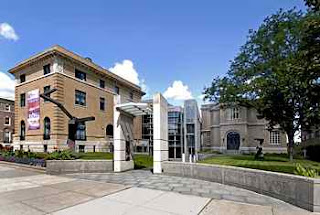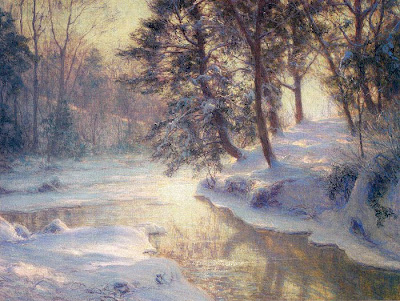 The following is a listing of soon to be closed and upcoming exhibitions appearing at the Albany Institute of History & Art. Dates, times, and details are subject to change. Call (518) 463-4478 or visit www.albanyinstitute.org for more information.
The following is a listing of soon to be closed and upcoming exhibitions appearing at the Albany Institute of History & Art. Dates, times, and details are subject to change. Call (518) 463-4478 or visit www.albanyinstitute.org for more information.
CLOSING SOON
ART AND NATURE: THE HUDSON RIVER SCHOOL PAINTINGS
CLOSING AUGUST 14, 2011
The term “Hudson River School” is used to describe paintings made by two generations of artists beginning in 1825 with Thomas Cole and flourishing for about 50 years. These artists are best known for their large panoramic views of landscapes throughout North and South America, Europe, and the Middle East. Their subject matter ranges from the sublime views of the wilderness, to beautiful pastoral scenes influenced by man, to allegorical pictures with moral messages. The Albany Institute of History & Art has been collecting materials related to the Hudson River School artists for more than 150 years. The museum’s collection includes 60 paintings, sketchbooks, photographs, paint boxes, and manuscript materials related to all of the major artists associated with this movement, recognized as the first school of American painting. This exhibition includes 25 paintings and complements an additional 20 works in the adjacent Lansing Gallery.
Square, Round and Lansing galleries
HAJO: AN ARTIST’S JOURNEY
CLOSING AUGUST 14, 2011
Hans-Joachim Richard Christoph (1903–1992), known familiarly as Hajo, lived through most of the 20th century and witnessed firsthand its high points and low moments. Born in Berlin, Germany, in 1903, he trained at the Reimann Schule following World War I, a time of artistic experiment and expression. When he immigrated to the United States in 1925, he brought training and skill that served him well as a graphic designer, first at the New York office of Lucien Bernhard and later at the Fort Orange Paper Company in Castleton, New York. Hajo created fresh, bold designs for Kenwood Mills, the Embossing Company, and other manufacturers, all meant to captivate and entice modern American consumers. In his spare time Hajo painted quiet landscapes that reflect the peaceful, small-town charms of the upper Hudson Valley. Hajo: An Artist’s Journey, tells the story of an immigrant artist, his journey from Europe to the Hudson Valley, and his artistic explorations. Sketchbooks, drawings, paintings, graphic designs, and photographs span the breadth of Hajo’s world and the art he created to capture it.
Jabbur Gallery
FROM THE PAGE’S EDGE: WATER IN LITERATURE AND ART
CLOSING AUGUST 28, 2011
Earth’s most abundant substance is the subject of this cross-disciplinary exhibition of literature and art. Featuring 19 paintings, hung adjacent to literary excerpts and accompanied by statements from the artists, From the Page’s Edge looks at written depictions of water in visual terms. Exhibition curated by Virginia Creighton. Catalogue available for sale in the Museum Shop. Sponsored by the New York Foundation for the Arts.
Rice House Drawing Room
CURATOR’S CHOICE: RECENT ACQUISITIONS
CLOSING AUGUST 28, 2011
The Albany Institute of History & Art presents an assortment of its latest acquisitions in the museum’s Entry Gallery. Items on display include a spectacular 12-piece silver serving set presented to Thomas Schuyler (1811–1866) in January 1859. The well-known Albany philanthropist, business leader, ship captain, and owner of the Schuyler Tow Boat Company, received the silver presentation set from a group of friends and business associates. The large tray, engraved with a large image of the towboat, America, owned by Schuyler’s company. The engraving is taken directly from a painting of the towboat painted by James Bard (1815–1897) in 1852, which is in the museum’s collection. The silver, painting, and other manuscript materials will be on view, along with a history of the towboat company started by Thomas’s father, Captain Samuel Schuyler (1781–1842), who was one of Albany’s most successful businessmen of African heritage.
Entry Gallery
2011 EXHIBITION BY ARTISTS OF THE MOHAWK-HUDSON REGION
CLOSING SEPTEMBER 4, 2011
This annual juried exhibition is open to artists living within a 100-mile radius of the Albany and Glens Falls. Founded in 1936, the regional exhibition is among the longest running regionals in the country and occupies a major role in the history of 20th and 21st century art in the Upper Hudson Valley. Jurors over the years have included artists, poets, curators and gallery owners. The museum hosts this exhibition every three years- other partners include the University Art Museum, State University of New York and the Hyde Museum. This year’s juror is Holly Hughes, a painter, curator and professor in the Painting Department at the Rhode Island School of Design. Hughes has worked as a visiting artist and critic for more than a dozen colleges including Bennington College, Brandeis University, Middlebury College, Parson School of Design, Kansas City Art Institute and Sarah Lawrence College. This year’s exhibition includes 160 works by 85 artists.
OPENINGS/UPCOMING EXHIBITIONS
PARKER C. DUNN: THE DUNN MEMORIAL BRIDGE
AUGUST 6–NOVEMBER 13, 2011
Now under extensive reconstructive work, the Dunn Memorial Bridge linking Albany to Rensselaer is named for Parker S. Dunn, a hero of World War I. Dunn was awarded the Congressional Medal of Honor posthumously for his bravery in delivering a message to a besieged company in a battle in France. Featuring photographs, letters, postcards, scrapbooks and the Medal of Honor, the exhibition highlights the life of Parker Dunn and the history and construction of the bridge.
Library Cases in Atrium
FIRST IN THE HEARTS OF HIS COUNTRYMEN: GEORGE WASHINGTON
AUGUST 27, 2011–MAY 20, 2012
George Washington—farmer, military hero, founding father of the United States. He is our best known president and doubtless our most pictured president. In life, Washington gained the respect and admiration of his countrymen. Following his death in December 1799 Washington transcended mortal existence to become a symbol for America that endures to this day. Drawn from the collections of the Institute and private collectors, First in the Hearts of his Countrymen features a variety of materials that depict Washington or have personal connections to the revered figure. From paintings and prints by Alex Katz and Currier and Ives to glass flasks and cast-iron stoves, this diverse range of objects reveals our infatuation with this national hero, our memorialization of his deeds and personal character, and the inevitable marketability of Washington’s image from the late eighteenth century to the present.
Square, Round, and Jabbur Galleries
ALBANY AND THE CIVIL WAR: MEDICINE ON THE HOME AND BATTLE FRONTS
SEPTEMBER 3, 2011–FEBRUARY 26, 2012
On the Civil War home front and on the battlefields, Albany residents played key roles in providing for the medical care of the sick and wounded. This exhibition examines the medical concerns and necessities of the war through objects, photographs, broadsides, and letters. Featured are materials related to the 1864 Albany Relief Bazaar held in support of the U.S. Sanitary Commission, created and sanctioned by the U.S. War Department to raise funds for medical supplies and to improve camp conditions for Union troops. The exhibition compares the home front efforts of the Relief Bazaar with the field notes and correspondence of Albert Vander Veer, an Albany physician and surgeon, and his brother Garrett, a soldier who sent home revealing letters about battles, camp life
, and the mental stress caused by the war. Images of Abraham Lincoln, national leader and inspirational force throughout the conflict will accompany the exhibition. This exhibition is supported by Albany Medical Center.
Entry Gallery
KID STUFF: GREAT TOYS FROM OUR CHILDHOOD
OCTOBER 1, 2011–March 4, 2012
Slinkys, Wooly Willys, Whee-los, Magic Eight Balls, Magic Yo-Yo’s, Etch A Sketch®, Spirographs, Colorforms, Matchbox® Cars, PEZ Dispensers, LEGO®s, Erector sets, Lionel Trains, Tonkas, Hot Wheels, Frisbee®s, G.I. Joes, BarbieTM Dolls, Tinker Toys, Lincoln Logs, and Mr. Potato Head brought hours of fun and entertainment to kids throughout the 1950s and 60s. Many of these toys from the past still appear on store shelves today, holding their own against the onslaught of computerized games and robotic pets. Kid Stuff, an interactive exhibition based on the book by David Hoffman, takes us back to the age of tailfins and vinyl records with more than 40 vintage toys, which reveal a fascinating look at invention and innovation, social history and industrial growth, play and entertainment. Visitors of all ages will be able to see vintage toys with original packaging and promotional material and have the opportunity to play and interact with contemporary versions. Additional materials such as photos of toy factory interiors, images of children at play, video presentations, and interpretive texts explore the toys’ invention and evolution, how they work, and their significance in American culture. The exhibition was designed by Amy Reichert Architecture+Design with graphic design and art direction by Winstanley Associates. Kid Stuff will occupy nearly 5,000 square feet in the second floor galleries at the Albany Institute.
Main Floor Galleries
TEMPLE OF FANCY: PEASE’S GREAT VARIETY STORE
NOVEMBER 19, 2011–MARCH 25, 2012
Before F. W. Woolworths’, or Whitney’s, or even Myer’s department store in Albany, there was Pease Great Variety Store located in the Temple of Fancy at 518 Broadway. From the 1840s to the 1860s Pease’s store was something of an upscale “Five and Dime,” where Albany families could purchase fancy goods, toys, household items, children’s books, and games. The building still stands at the corner of Broadway and Pine Street. Richard H. Pease, and later Harry E. Pease, were proprietors of the store and also noted printers. They printed the first Christmas card in America in 1851 (only one of which exists at the Manchester Metropolitan Museum in England) and they also produced the hand-colored lithographs of fruit for Ebenezer Emmons’ Agriculture of New York published between 1846 and 1854. The exhibit will draw from the collections of the Albany Institute and include photographs, prints, children’s books, card games, and puzzles.
Library Cases in Atrium



